While eclipse watchers look to the skies, people who are blind or visually impaired will be able to hear and feel the celestial event.
Sound and touch devices will be available at public gatherings on April 8, when a total solar eclipse crosses North America, the moon blotting out the sun for a few minutes.
“Eclipses are very beautiful things, and everyone should be able to experience it once in their lifetime,” said Yuki Hatch, a high school senior in Austin, Texas.
Hatch is a visually impaired student and a space enthusiast who hopes to one day become a computer scientist for NASA. On eclipse day, she and her classmates at the Texas School for the Blind and Visually Impaired plan to sit outside in the school’s grassy quad and listen to a small device called a LightSound box that translates changing light into sounds.
When the sun is bright, there will be high, delicate flute notes. As the moon begins to cover the sun, the mid-range notes are those of a clarinet. Darkness is rendered by a low clicking sound.
“I’m looking forward to being able to actually hear the eclipse instead of seeing it,” said Hatch.
The LightSound device is the result of a collaboration between Wanda Díaz-Merced, an astronomer who is blind, and Harvard astronomer Allyson Bieryla. Díaz-Merced regularly translates her data into audio to analyze patterns for her research.
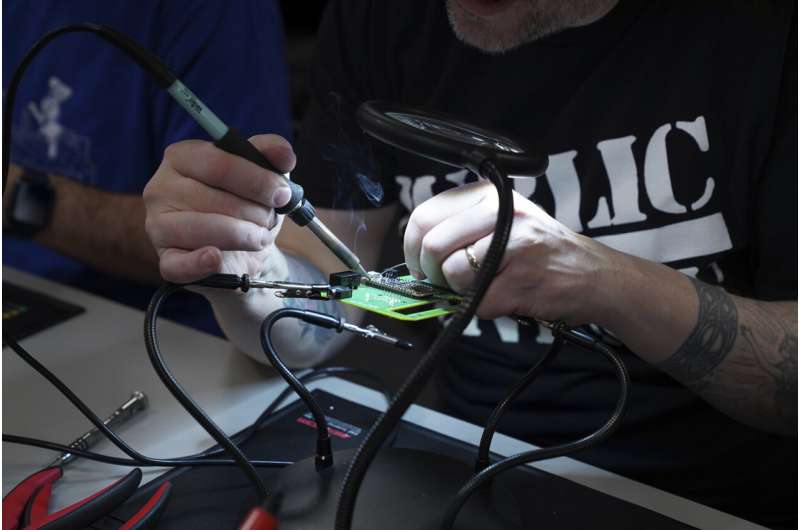
A prototype was first used during the 2017 total solar eclipse that crossed the U.S., and the handheld device has been used at other eclipses.
This year, they are working with other institutions with the goal of distributing at least 750 devices to locations hosting eclipse events in Mexico, the U.S., and Canada. They held workshops at universities and museums to construct the devices, and provide DIY instructions on the group’s website.
“The sky belongs to everyone. And if this event is available to the rest of the world, it has to be available for the blind, too,” said Díaz-Merced. “I want students to be able to hear the eclipse, to hear the stars.”
The Perkins Library—associated with the Perkins School for the Blind in Watertown, Massachusetts—plans to broadcast the changing tones of the LightSound device over Zoom for members to listen online and by telephone, said outreach manager Erin Fragola.
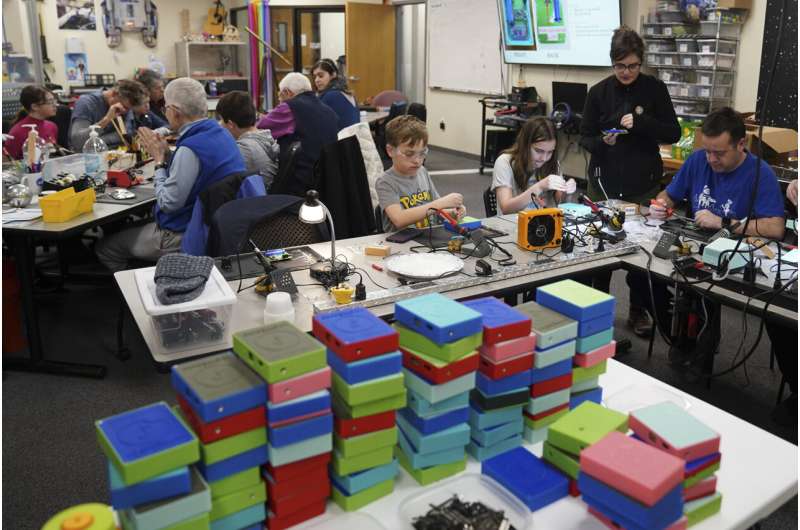
In addition to students, many of the library’s senior patrons have age-related vision loss, he said.
“We try to find ways to make things more accessible for everyone,” he said.
Others will experience the solar event through the sense of touch, with the Cadence tablet from Indiana’s Tactile Engineering. The tablet is about the size of a cellphone with rows of dots that pop up and down. It can be used for a variety of purposes: reading Braille, feeling graphics and movie clips, playing video games.
For the eclipse, “A student can put their hand over the device and feel the moon slowly move over the sun,” said Tactile Engineering’s Wunji Lau.
The Indiana School for the Blind and Visually Impaired started incorporating the tablet into its curriculum last year. Some of the school’s students experienced last October’s “ring of fire” eclipse with the tablet.
-
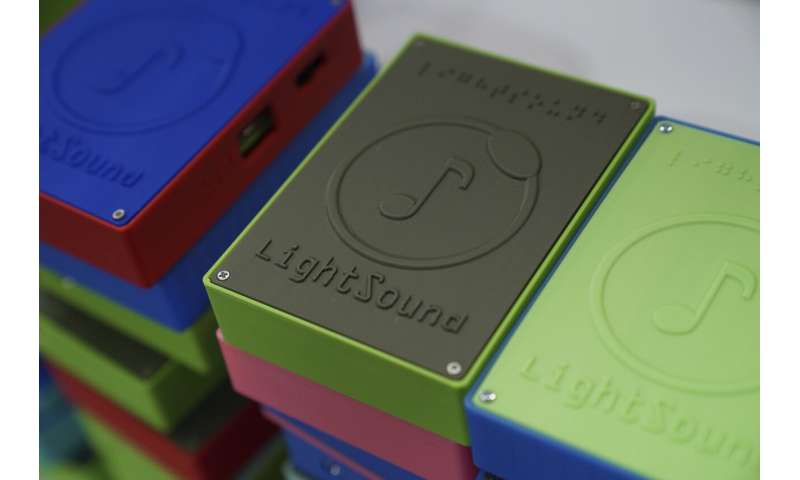
3D printed cases for LightSound devices are stacked together at the New England Sci-Tech education center in Natick, Mass., on March 2, 2024. A prototype was first used during the 2017 total solar eclipse in North America, and the handheld device has been at other eclipses in increasing numbers. Credit: AP Photo/Mary Conlon
-
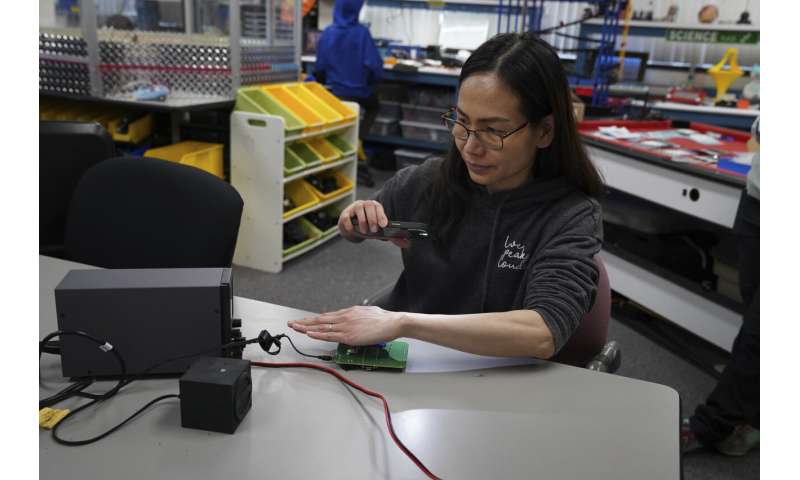
Katherine Tso tests components of a LightSound device at the New England Sci-Tech education center in Natick, Mass., on March 2, 2024. When the sun is bright, the device plays high flute notes. As the moon begins to cover the sun, the mid-range notes are those of a clarinet. Darkness is rendered by a low clicking sound. Credit: AP Photo/Mary Conlon
-
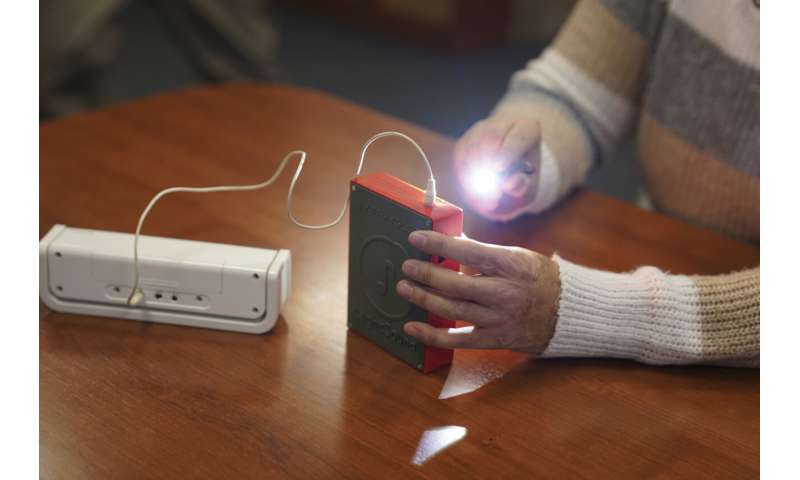
Minh Ha, assistive technology manager at the Perkins School for the Blind uses a flashlight to try a LightSound device, attached to an external speaker, for the first time at the school’s library in Watertown, Mass., on March 2, 2024. Wanda Díaz-Merced, an astronomer who is blind, a co-creator of the device, says, “The sky belongs to everyone. And if this event is available to the rest of the world, it has to be available for the blind, too. … I want students to be able to hear the eclipse, to hear the stars.” Credit: AP Photo/Mary Conlon
Sophomore Jazmine Nelson is looking forward to joining the crowd expected at NASA’s big eclipse-watching event at the Indianapolis Motor Speedway, where the tablet will be available.
With the tablet, “You can feel like you’re a part of something,” she said.
Added her classmate Minerva Pineda-Allen, a junior. “This is a very rare opportunity, I might not get this opportunity again.”
© 2024 The Associated Press. All rights reserved. This material may not be published, broadcast, rewritten or redistributed without permission.
Citation:
Blind people can hear and feel April’s total solar eclipse with new technology (2024, March 29)
retrieved 29 March 2024
from
This document is subject to copyright. Apart from any fair dealing for the purpose of private study or research, no
part may be reproduced without the written permission. The content is provided for information purposes only.